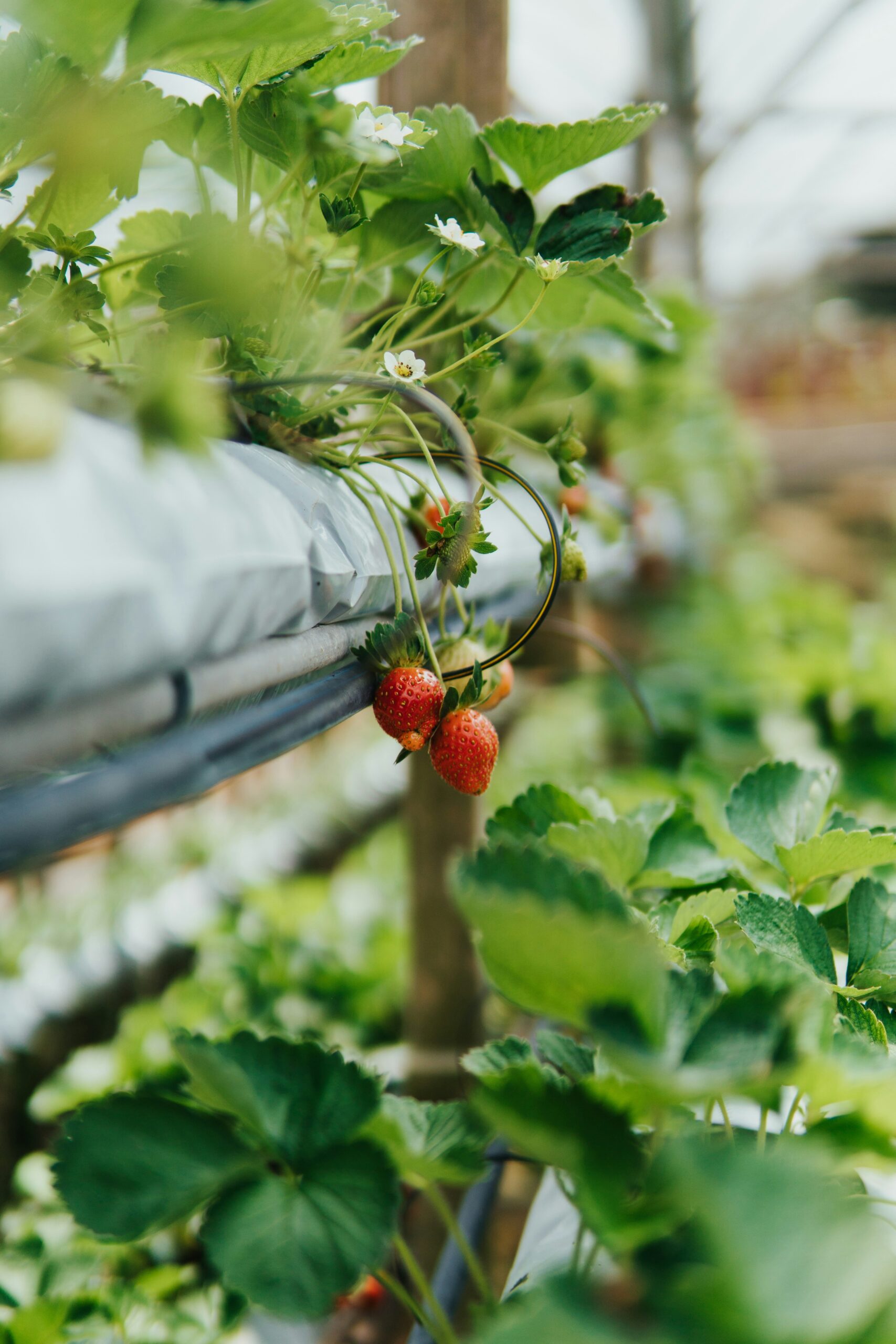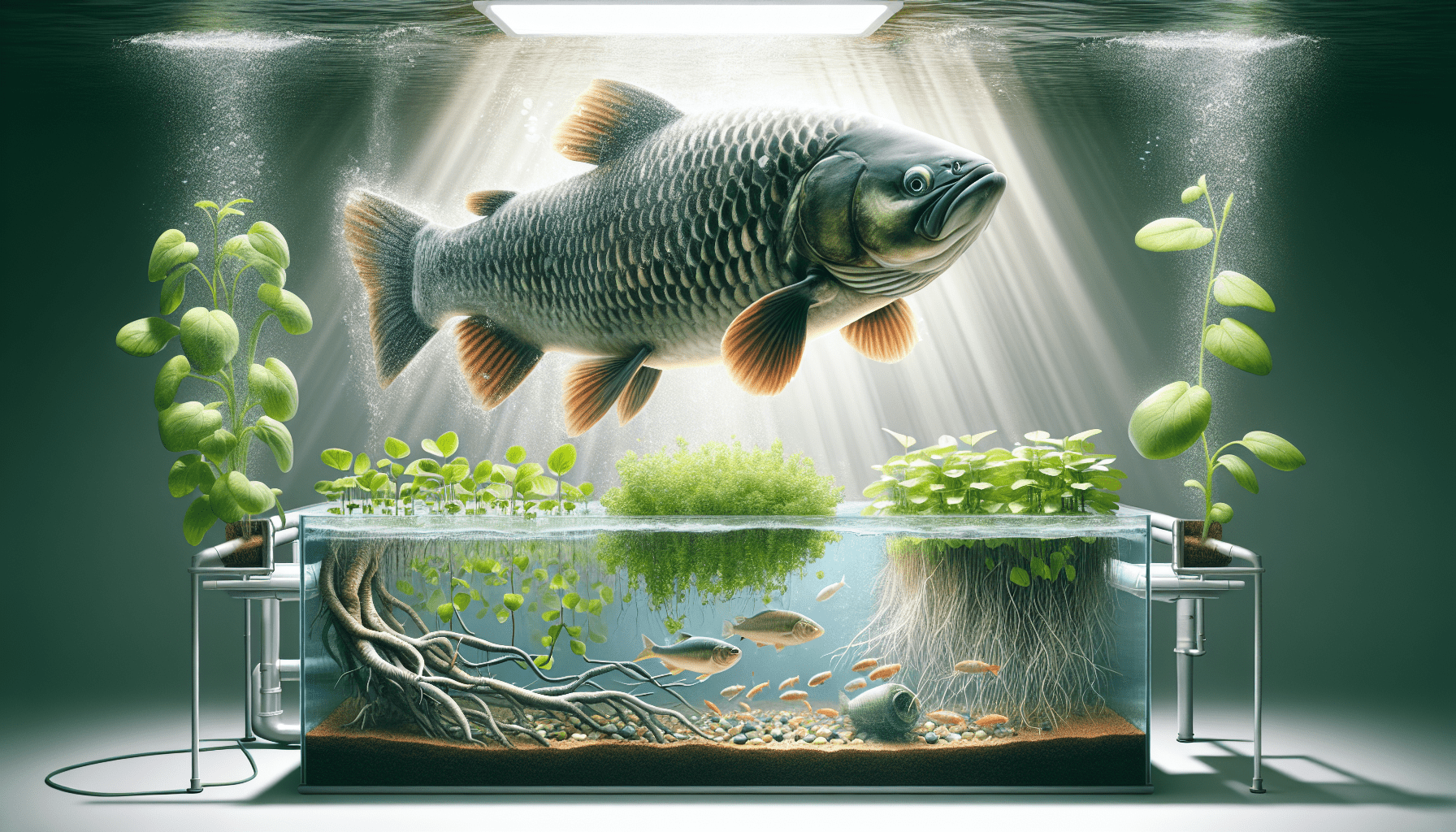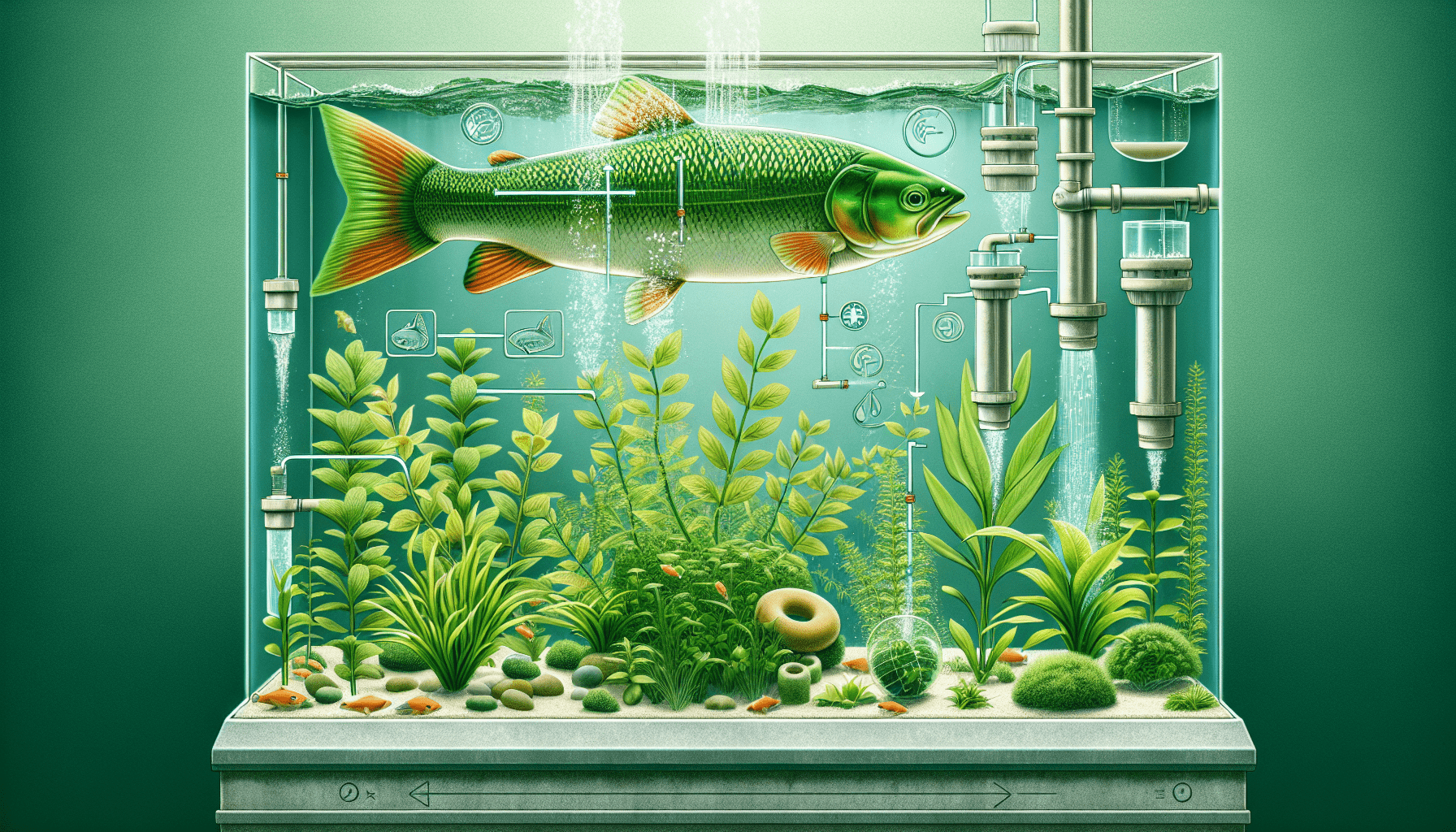Are you curious about the possibility of raising edible fish in an aquaponics system? If so, you’ve come to the right place. Many people are discovering the potential of this innovative and sustainable farming method, which combines the cultivation of plants and aquatic animals in a closed-loop ecosystem. In this article, we will explore the feasibility of raising edible fish in an aquaponics system and delve into the benefits it offers. So, grab a chair and prepare to dive into the world of aquaponics!
Benefits of Aquaponics System
Aquaponics is a sustainable and efficient system that combines aquaculture (raising fish) and hydroponics (growing plants without soil). This innovative method of farming offers numerous benefits that make it an attractive option for both commercial growers and backyard enthusiasts.
One of the main advantages of an aquaponics system is its sustainable nature. This system mimics a natural ecosystem where fish waste provides essential nutrients for plant growth, while the plants filter and purify the water for the fish. By creating a closed-loop system, aquaponics reduces the need for harmful pesticides, herbicides, and chemical fertilizers.
Additionally, aquaponics is extremely water-efficient. Compared to traditional farming methods, which can use up to 90% more water due to evaporation and runoff, aquaponics requires significantly less water. The water in the system is continuously recirculated and only needs occasional top-ups to compensate for evaporation. This reduction in water usage is not only eco-friendly but also helps to save on costs in the long run.
Furthermore, an aquaponics system eliminates the need for chemical fertilizers. Instead of relying on synthetic nutrients, the plants in an aquaponics setup receive a balance of natural nutrients from the fish waste. This organic approach not only benefits the plants but also ensures that the fish are kept in a healthy and chemical-free environment.
Suitable Fish Species for Aquaponics
When it comes to choosing the right fish species for your aquaponics system, certain factors need to be taken into consideration. These factors include water temperature, water quality, feeding requirements, growth rate, and fish density.
Tilapia is one of the most popular fish species for aquaponics. It is a warm-water fish that thrives in temperatures between 75-85°F (24-29°C). Tilapia can tolerate a wide range of water quality conditions, making them a suitable choice for aquaponics beginners.
Trout is another option to consider, especially if you have a cool-water system. Trout prefer water temperatures between 50-60°F (10-15°C) and require well-oxygenated water. Their rapid growth rate makes them a preferred choice for commercial aquaponics operations.
Carp is a hardy fish species that can adapt to various water conditions, including temperature fluctuations. They are known for their ability to grow quickly and can tolerate a wide range of water quality conditions, making them an ideal choice for aquaponics.
Catfish is also a popular choice for aquaponics, especially in warmer climates. They prefer water temperatures between 75-85°F (24-29°C) and are well-suited to recirculating aquaponics systems. Catfish are known for their adaptability and ability to consume a wide variety of feed.

This image is property of images.unsplash.com.
Factors to Consider for Edible Fish
When selecting fish for consumption in an aquaponics system, several factors should be considered to ensure their well-being and optimal growth.
Water temperature plays a crucial role in the health and growth of edible fish species. Different fish have specific temperature preferences, and it is essential to maintain the recommended range to avoid stress or stunted growth. Monitoring and regulating the water temperature is crucial in providing a suitable environment for the fish.
Water quality is another significant factor to consider when raising edible fish in an aquaponics system. The water should be free from harmful substances and maintain appropriate pH levels. Regular testing and monitoring of water parameters such as ammonia, nitrate, nitrite, and pH are essential to ensure the fish thrive in a clean and healthy environment.
Feeding requirements vary depending on the species of fish. It is crucial to provide a well-balanced diet that meets their nutritional needs. Fish feed pellets specifically formulated for aquaculture can be used to supplement their diet. Additionally, incorporating natural alternatives such as worms, insects, or even duckweed can add diversity to their diet and enhance their overall health.
The growth rate of the fish species chosen for aquaponics is another important consideration. Different fish grow at different rates, and it is crucial to select species that align with your desired timeline and goals. Some fish species are known for their rapid growth, which can maximize the productivity of your aquaponics system.
Fish density refers to the number of fish per unit of tank or system volume. Overcrowding can lead to poor water quality, stress, and disease among the fish. It is important to consider the available space and the recommended fish density for the species you choose. Providing adequate space and maintaining optimal fish density is essential for the overall health and well-being of the fish.
Setting up an Aquaponics System
Setting up an aquaponics system requires careful planning and consideration of various factors. Here are the key steps involved in establishing a successful aquaponics system:
Selecting an Appropriate Tank Size
The size of the tank or tanks you choose will depend on the space you have available and the number of fish you plan to raise. It is important to provide enough space for the fish to thrive and swim comfortably. Consider the growth rate of the fish and allow room for expansion if you plan to scale up your operations in the future.
Choosing a Filtration System
A reliable filtration system is crucial for maintaining water quality in an aquaponics system. Biofilters, mechanical filters, and solids removal systems play a vital role in eliminating waste, excess nutrients, and harmful substances from the water. Research and select a filtration system that meets the specific needs of your aquaponics setup.
Providing Sufficient Aeration and Oxygenation
Fish require a sufficient supply of dissolved oxygen to breathe and thrive. Proper aeration and oxygenation of the water are essential to prevent oxygen deficiencies and ensure the overall health of the fish. Aeration devices such as air stones, diffusers, or mechanical aerators should be installed to maintain proper oxygen levels in the water.
Establishing a Balanced Ecosystem
Creating a balanced ecosystem is a key aspect of a successful aquaponics system. Introducing beneficial bacteria, such as nitrifying bacteria, helps convert fish waste into plant nutrients. Additionally, including appropriate plants in the system not only adds beauty but also aids in filtration and nutrient uptake. Choose plants that are compatible with the specific needs of your fish and create a harmonious relationship between the fish and plants.

Fish Feed in Aquaponics
Proper nutrition is vital for the health and growth of fish in an aquaponics system. There are different types of fish feed available, each with its own advantages and considerations.
Types of Fish Feed
Commercial fish feed pellets formulated specifically for aquaculture are a popular choice for aquaponics. These pellets often provide a balanced diet with the essential nutrients required for optimal fish growth. Select high-quality fish feed that meets the nutritional needs of the specific fish species you are raising.
Balanced Diet for Fish
A balanced diet for fish typically consists of proteins, carbohydrates, lipids, vitamins, and minerals. Proteins are essential for muscle development, while carbohydrates provide energy. Lipids are sources of essential fatty acids, which aid in growth and reproduction. Vitamins and minerals are crucial for maintaining overall health and disease prevention. By offering a well-balanced diet, you can ensure the fish receive the nutrients they need for optimal growth and development.
Natural Alternatives to Commercial Feed
In addition to commercial feed, there are natural alternatives that can supplement the diet of fish in an aquaponics system. These include insects, worms, duckweed, and aquatic plants. Incorporating these natural food sources can introduce variety to the fish’s diet and promote a more natural and diverse food chain within the system.
Maintaining Water Quality
Maintaining water quality is essential for the health and well-being of fish in an aquaponics system. Here are some key aspects to consider when it comes to water quality management:
Monitoring Ammonia Levels
Ammonia is a toxic substance produced by fish waste and decomposing organic matter. High levels of ammonia can be detrimental to the fish and disrupt the balance of the aquaponics system. Regularly test ammonia levels and implement measures to minimize its accumulation, such as proper filtration and maintaining a balanced ecosystem.
Maintaining pH Balance
The pH of the water is an important parameter that affects the health and well-being of fish. Different fish species have specific pH requirements, and it is crucial to maintain the recommended range. Regularly monitor and adjust the pH as necessary to ensure a stable and suitable environment for the fish.
Removing Solid Waste
Solid waste, such as uneaten fish feed and feces, can accumulate in the system and affect water quality. Proper solids removal techniques, such as mechanical filtration or settling tanks, should be implemented to remove debris and prevent excess organic matter buildup. This helps maintain a clean and healthy environment for the fish.
Preventing Algae Growth
Algae can be a common issue in aquaponics systems, especially when nutrient levels are imbalanced or light exposure is excessive. Algae growth can result in poor water quality and negatively impact the fish. Implementing measures such as light reduction, nutrient control, and the introduction of algae-eating organisms can help prevent and control algae growth.

Harvesting and Processing Fish
Once your fish have reached the desired size and are ready for harvest, it is important to follow proper procedures to ensure a humane and hygienic process. Here are some key considerations for harvesting and processing fish in an aquaponics system:
Determining the Right Time for Harvesting
The timing of fish harvesting depends on various factors, including the species, growth rate, and market demand. It is essential to regularly monitor the growth of the fish and assess when they have reached an optimal size for harvesting. Harvesting too soon may result in undersized fish, while delaying the harvest may lead to overcrowding and compromised water quality.
Humanely Harvesting Fish
When it comes to harvesting fish, it is crucial to prioritize their well-being and minimize stress. Using humane methods such as stunning or sedating the fish before harvesting helps ensure a more ethical process. Additionally, quick and efficient handling techniques minimize stress and reduce the risk of injury or trauma to the fish.
Proper Fish Processing Techniques
After harvesting, proper fish processing techniques are essential to maintain the quality and freshness of the fish. This includes bleeding, gutting, cleaning, and chilling the fish to prevent spoilage and ensure food safety. Following food handling and processing guidelines is crucial to maintain the integrity of the final product.
Common Challenges in Aquaponics System
While aquaponics offers numerous benefits, there can be certain challenges to be aware of. Here are some common challenges that may arise in an aquaponics system:
Disease and Health Issues in Fish
Just like any other form of fish farming, aquaponics systems may be susceptible to disease outbreaks. Factors such as poor water quality, fish stress, or the introduction of infected fish or plants can contribute to the spread of diseases. Regular monitoring, proper water management, and maintaining a balanced and healthy ecosystem can help mitigate the risk of disease and promote fish health.
Algae Bloom
Algae bloom is a common occurrence in aquaponics systems, especially when nutrient levels are imbalanced or light exposure is excessive. Algae can compete with plants for nutrients and oxygen, leading to poor water quality and reduced fish growth. Effective algae control measures, such as light reduction, nutrient management, and the use of algae-eating organisms, can help prevent and control algae bloom.
Maintaining Optimum Water Temperature
Water temperature plays a crucial role in the health and growth of fish in an aquaponics system. Maintaining a stable and suitable temperature within the recommended range can sometimes be a challenge, especially in fluctuating climates or extreme weather conditions. Implementing proper insulation, temperature control devices, and monitoring systems can help maintain optimum water temperature and minimize stress on the fish.
Benefits of Edible Fish in Aquaponics
Raising edible fish in an aquaponics system offers a range of benefits, both for the grower and the environment.
Fresh and Organic Fish
One of the primary benefits of raising edible fish in aquaponics is the ability to produce fresh and organic fish. By eliminating the use of chemical fertilizers and pesticides, aquaponics creates a natural and sustainable environment for fish growth. This results in high-quality fish free from harmful chemicals and toxins, offering a healthier and more natural food source.
Enhanced Plant Growth
The relationship between fish and plants in an aquaponics system is mutually beneficial. Fish waste provides essential nutrients that promote plant growth, while plants act as natural filters, purifying the water for the fish. This symbiotic relationship creates an ideal growing environment for both plants and fish, resulting in faster growth and higher yields.
Cost-saving and Self-sufficiency
Aquaponics offers the opportunity for cost-saving and self-sufficiency. By combining fish and plant cultivation in one system, the need for external inputs such as fertilizers and pesticides is eliminated or significantly reduced. This not only saves money but also promotes self-sufficiency, allowing individuals or communities to produce their own food year-round.
Conclusion
Aquaponics is a sustainable and efficient farming method that brings together the benefits of aquaculture and hydroponics. By raising edible fish in an aquaponics system, you can enjoy fresh, organic fish while simultaneously growing plants in a symbiotic and eco-friendly environment. The potential for a thriving aquaponics fish farm is vast, offering opportunities for both commercial production and personal enjoyment. With proper planning, careful attention to water quality, and consideration of specific fish species, you can create a successful aquaponics system that provides a sustainable solution for food production.


